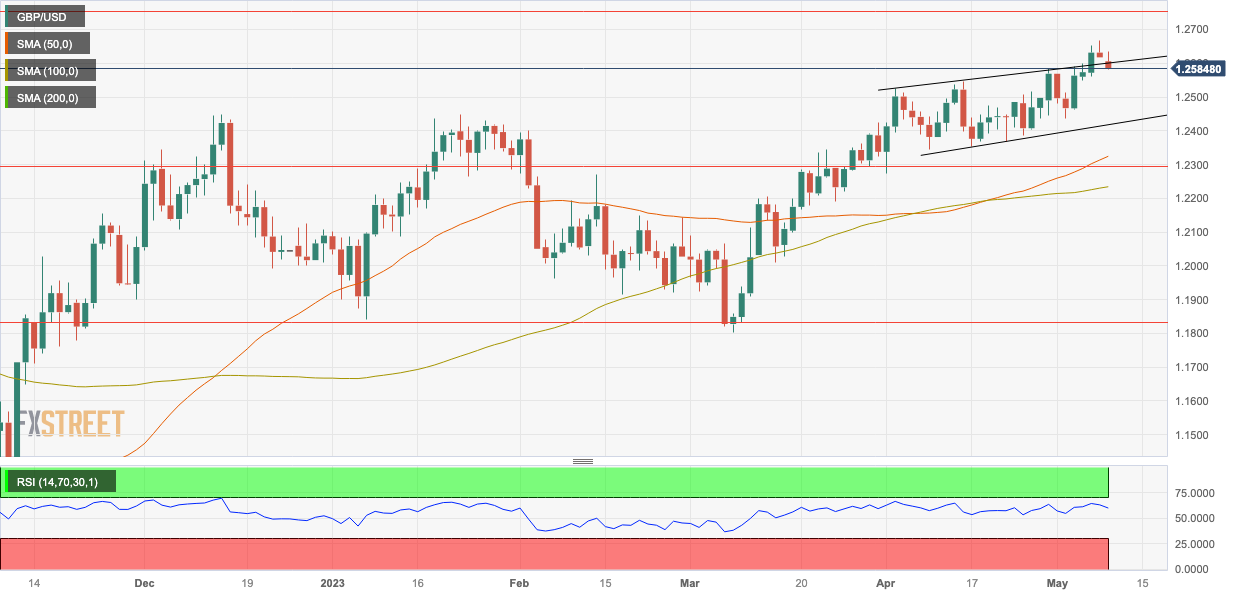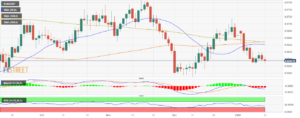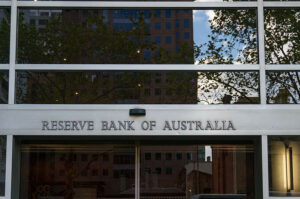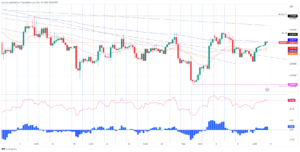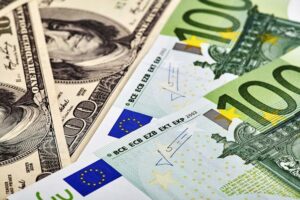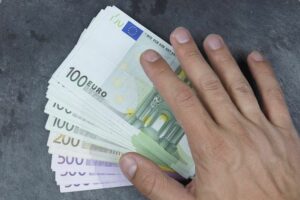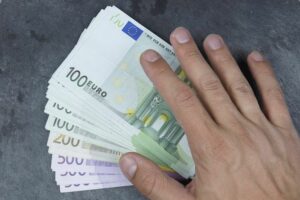- Pound Sterling vs US Dollar drops to around the 1.26 handle ahead of key macroeconomic events for the week.
- The Pound Sterling is likely to be impacted by the Bank of England meeting on “Super Thursday”.
- The US Dollar will look for impetus from the US Consumer Price Index data for April on Wednesday.
The Pound Sterling (GBP) recovers back above the 1.2600 handle versus the US Dollar (USD) on Tuesday, as the Greenback slips on the back of slightly softer US Treasury bond yields.
Traders are gearing up for two big releases that will impact GBP/USD over the next two days – US Consumer Price Index (CPI) inflation data on Wednesday and the Bank of England (BoE) policy meeting on Thursday.
From a technical perspective, GBP/USD is in a broadly bullish long-term uptrend. Given the old adage that “the trend is your friend” this advantages long over short holders.
GBP/USD market movers
- The Pound Sterling will probably take direction from the outcome of the Bank of England (BoE) policy meeting on Thursday. A 25 bps interest rate hike is now expected with almost 100% certainty. What is less certain is the bank’s forward guidance, BoE Chairman Andrew Bailey’s comments in the press conference afterwards, and the distribution of member votes.
- Some observers see possible 60 bps of further rate hikes required to get inflation under control. If true, that would widen the monetary policy divergence between the Bank of England and the Federal Reserve (Fed) – which is widely expected not to raise rates any higher. This would favor the Pound Sterling, as higher interest rate expectations give currencies a ‘carry’ advantage. Carry is the difference between the interest rates of two currencies and measures the benefit of holding the one with the higher interest rate. It is also used in the pricing of many derivatives, such as futures and options.
- The distribution of voting at the BoE’s last meeting was 7-2, with seven policymakers voting for a 25 bps rate hike and two voting for no change. If the distribution changes either way that will impact GBP with a decrease in the ‘no-change’ camp lifting GBP/USD and vice versa for an increase.
- US Treasury bond yields have risen for three consecutive days, providing the US Dollar with some support, but yields are pulling back slightly on Tuesday, which could be a slight headwind for the USD.
- The Federal Reserve’s bank Lending Officer Survey (Q1), released on Monday, was broadly negative and suggested credit conditions had tightened due in part to the fallout from the banking crisis. Although the impact on the US Dollar at the time of release was minimal, it may be a factor impacting on yields.
- The release of US Consumer Price Index (CPI) data for April on Wednesday, May 10, at 12:30 GMT, will provide further data for the Federal Reserve to base its future policy trajectory on. Currently expectations are for CPI to increase by 0.4% MoM and 5% YoY. Core CPI is forecast to rise by 0.4% MoM and 5.5% YoY, and is the metric that has the greater impact. A higher-than-expected result would be negative for GBP/USD and vice versa for a lower-than-forecast print.
GBP/USD technical analysis: Shooting star hints at correction
GBP/USD broadly keeps extending its established uptrend making progressively higher highs and higher lows, and this is likely to continue favoring Pound Sterling longs over shorts.
The GBP/USD peaked at 1.2669 on Monday, printing new year-to-date highs for the pair. It then declined on the same day and closed lower, forming what is known as a shooting star – a Japanese candlestick reversal pattern. If the shooting star is followed by a bearish day on Tuesday it could be a sign the pair is about to correct down. If the close of the day is below last Friday’s low of 1.2561 that would add further bearishness to the short-term outlook.
The GBP/USD pair is, at the time of writing, resting right on top of support from an upper channel line at 1.2600-05. A decisive break below the level would suggest further weakness on the horizon, possibly down to the lower channel line at around 1.2440.
Decisive bearish breaks are characterized by either a long red daily candle that breaks below the key resistance level in question, and closes near the day’s lows. Or alternatively, three consecutive red bars that break below the level. Such insignia provide confirmation that the break is not a ‘false break’ or bear trap.
It would require a decisive break below the 1.2435 May 2 lows to challenge the dominance of the uptrend and suggest the chance of a bear reversal.
Given this is not yet the case, there is still every chance the exchange rate could turn around at any time and start going up again. The May 2022 highs at 1.2665 provide the first target and resistance level, then at the 100-week Simple Moving Average (SMA) situated at 1.2713, and finally at the 61.8% Fibonacci retracement of the 2021-22 bear market, at 1.2758. All provide potential upside targets for the pair. Each level will need to be decisively breached to open the door to the next.
The Relative Strength Index (RSI) has fallen to 60 at the time of writing after peaking in the upper 60s close to overbought. RSI is more or less moving in tandem with price, therefore, providing little indication of underlying strength or weakness.
US Dollar FAQs
What is the US Dollar?
The US Dollar (USD) is the official currency of the United States of America, and the ‘de facto’ currency of a significant number of other countries where it is found in circulation alongside local notes. It is the most heavily traded currency in the world, accounting for over 88% of all global foreign exchange turnover, or an average of $6.6 trillion in transactions per day, according to data from 2022.
Following the second world war, the USD took over from the British Pound as the world’s reserve currency. For most of its history, the US Dollar was backed by Gold, until the Bretton Woods Agreement in 1971 when the Gold Standard went away.
How do the decisions of the Federal Reserve impact the US Dollar?
The most important single factor impacting on the value of the US Dollar is monetary policy, which is shaped by the Federal Reserve (Fed). The Fed has two mandates: to achieve price stability (control inflation) and foster full employment. Its primary tool to achieve these two goals is by adjusting interest rates.
When prices are rising too quickly and inflation is above the Fed’s 2% target, the Fed will raise rates, which helps the USD value. When inflation falls below 2% or the Unemployment Rate is too high, the Fed may lower interest rates, which weighs on the Greenback.
What is Quantitative Easing and how does it influence the US Dollar?
In extreme situations, the Federal Reserve can also print more Dollars and enact quantitative easing (QE). QE is the process by which the Fed substantially increases the flow of credit in a stuck financial system.
It is a non-standard policy measure used when credit has dried up because banks will not lend to each other (out of the fear of counterparty default). It is a last resort when simply lowering interest rates is unlikely to achieve the necessary result. It was the Fed’s weapon of choice to combat the credit crunch that occurred during the Great Financial Crisis in 2008. It involves the Fed printing more Dollars and using them to buy US government bonds predominantly from financial institutions. QE usually leads to a weaker US Dollar.
What is Quantitative Tightening and how does it influence the US Dollar?
Quantitative tightening (QT) is the reverse process whereby the Federal Reserve stops buying bonds from financial institutions and does not reinvest the principal from the bonds it holds maturing in new purchases. It is usually positive for the US Dollar.
- SEO Powered Content & PR Distribution. Get Amplified Today.
- PlatoAiStream. Web3 Data Intelligence. Knowledge Amplified. Access Here.
- Minting the Future w Adryenn Ashley. Access Here.
- Buy and Sell Shares in PRE-IPO Companies with PREIPO®. Access Here.
- Source: https://www.fxstreet.com/news/pound-sterling-pulls-back-ahead-of-us-inflation-data-202305091314
- :has
- :is
- :not
- :where
- $UP
- 1
- 10
- 11
- 12
- 15%
- 2%
- 2022
- 26
- 30
- a
- About
- above
- According
- Accounting
- Achieve
- add
- ADvantage
- advantages
- After
- afterwards
- again
- Agreement
- ahead
- All
- alongside
- also
- Although
- america
- an
- analysis
- and
- Andrew
- any
- April
- ARE
- around
- AS
- At
- average
- away
- back
- backed
- Bank
- Bank of England
- Bank of England (BOE)
- Banking
- banking crisis
- Banks
- bars
- base
- BE
- Bear
- Bear Market
- bearish
- because
- below
- benefit
- between
- Big
- bis
- BoE
- bond
- Bond yields
- Bonds
- Break
- breaks
- Bretton
- Bretton Woods
- British
- British Pound
- broadly
- Bullish
- but
- buy
- Buying
- by
- Camp
- CAN
- carry
- case
- certain
- certainty
- chairman
- challenge
- Chance
- change
- Changes
- Channel
- characterized
- choice
- Circulation
- Close
- closed
- Closes
- CO
- combat
- comments
- conditions
- Conference
- confirmation
- consecutive
- consumer
- consumer price index
- continue
- control
- control inflation
- Core
- correct
- could
- Counterparty
- countries
- CPI
- credit
- crisis
- crunch
- currencies
- Currency
- Currently
- daily
- data
- day
- Days
- decisions
- decisive
- decrease
- Default
- Derivatives
- difference
- direction
- distribution
- Divergence
- do
- does
- Dollar
- dollars
- Dominance
- Door
- down
- Drops
- due
- during
- each
- easing
- either
- employment
- England
- established
- Event
- events
- Every
- exchange
- Exchange rate
- expanded
- expectations
- expected
- extending
- extreme
- factor
- Fallen
- fallout
- Falls
- FAQ
- favor
- fear
- Fed
- Federal
- federal reserve
- Federal Reserve’s
- Fibonacci
- Finally
- financial
- financial crisis
- Financial institutions
- financial system
- First
- flow
- followed
- For
- Forecast
- foreign
- foreign exchange
- Forward
- Foster
- found
- from
- full
- further
- future
- Futures
- GBP
- GBP/USD
- gearing
- get
- Give
- given
- Global
- GMT
- Goals
- going
- Gold
- Gold Standard
- Government
- government bonds
- great
- greater
- Greenback
- guidance
- had
- handle
- Have
- heavily
- helps
- High
- higher
- Highs
- Hike
- Hikes
- hints
- history
- holders
- holding
- holds
- horizon
- How
- HTTPS
- if
- Impact
- impacted
- impacting
- important
- in
- Increase
- Increases
- index
- indication
- inflation
- influence
- institutions
- interest
- INTEREST RATE
- interest rate hike
- Interest Rates
- IT
- ITS
- Japanese
- Key
- key resistance
- known
- Last
- Leads
- LEND
- lending
- less
- Level
- lifting
- likely
- Line
- little
- local
- Long
- long-term
- Look
- Low
- lowering
- Lows
- Macroeconomic
- Making
- mandates
- many
- Market
- May..
- measure
- measures
- meeting
- member
- metric
- minimal
- mom
- Monday
- Monetary
- Monetary Policy
- more
- most
- moving
- moving average
- Near
- necessary
- Need
- negative
- New
- next
- no
- Notes
- now
- number
- occurred
- of
- Officer
- official
- Old
- on
- ONE
- open
- Options
- or
- Other
- out
- Outcome
- over
- part
- Pattern
- perspective
- plato
- Plato Data Intelligence
- PlatoData
- policy
- policymakers
- positive
- possible
- possibly
- potential
- pound
- pound sterling
- predominantly
- press
- price
- Prices
- pricing
- primary
- Principal
- printing
- probably
- process
- progressively
- provide
- providing
- pulling
- purchases
- Q1
- QE
- QT
- quantitative
- Quantitative Easing
- quantitative tightening
- question
- quickly
- raise
- Rate
- Rate Hike
- rate hikes
- Rates
- Recovers
- Red
- reinvest
- relative strength index
- Relative Strength Index (RSI)
- release
- Releases
- require
- required
- Reserve
- Reserve Currency
- reserves
- Resistance
- Resort
- result
- retracement
- Reversal
- reverse
- Rise
- Risen
- rising
- Risk
- rsi
- s
- same
- Second
- Second world war
- see
- seven
- shaped
- shooting
- Short
- short-term
- shorts
- sign
- significant
- Simple
- simply
- single
- situations
- SMA
- some
- Stability
- standard
- Star
- start
- States
- sterling
- Still
- Stops
- strength
- substantially
- such
- suggest
- support
- Survey
- system
- Take
- Tandem
- Target
- targets
- Technical
- Technical Analysis
- that
- The
- the Fed
- The United States of America
- the world
- Them
- then
- There.
- therefore
- These
- this
- three
- thursday
- tightening
- time
- to
- too
- took
- tool
- top
- traded
- trades
- trajectory
- Transactions
- treasury
- Trend
- Trillion
- true
- Tuesday
- TURN
- turnover
- two
- under
- underlying
- unemployment
- unemployment rate
- United
- United States
- UNITED STATES OF AMERICA
- until
- Upside
- uptrend
- us
- US Dollar
- us government
- US Treasury
- USD
- USD value
- used
- using
- usually
- value
- Versus
- votes
- Voting
- vs
- war
- was
- Way..
- weakness
- Wednesday
- week
- weighs
- What
- What is
- when
- which
- widely
- will
- with
- Woods
- world
- would
- writing
- yet
- yields
- Your
- zephyrnet

